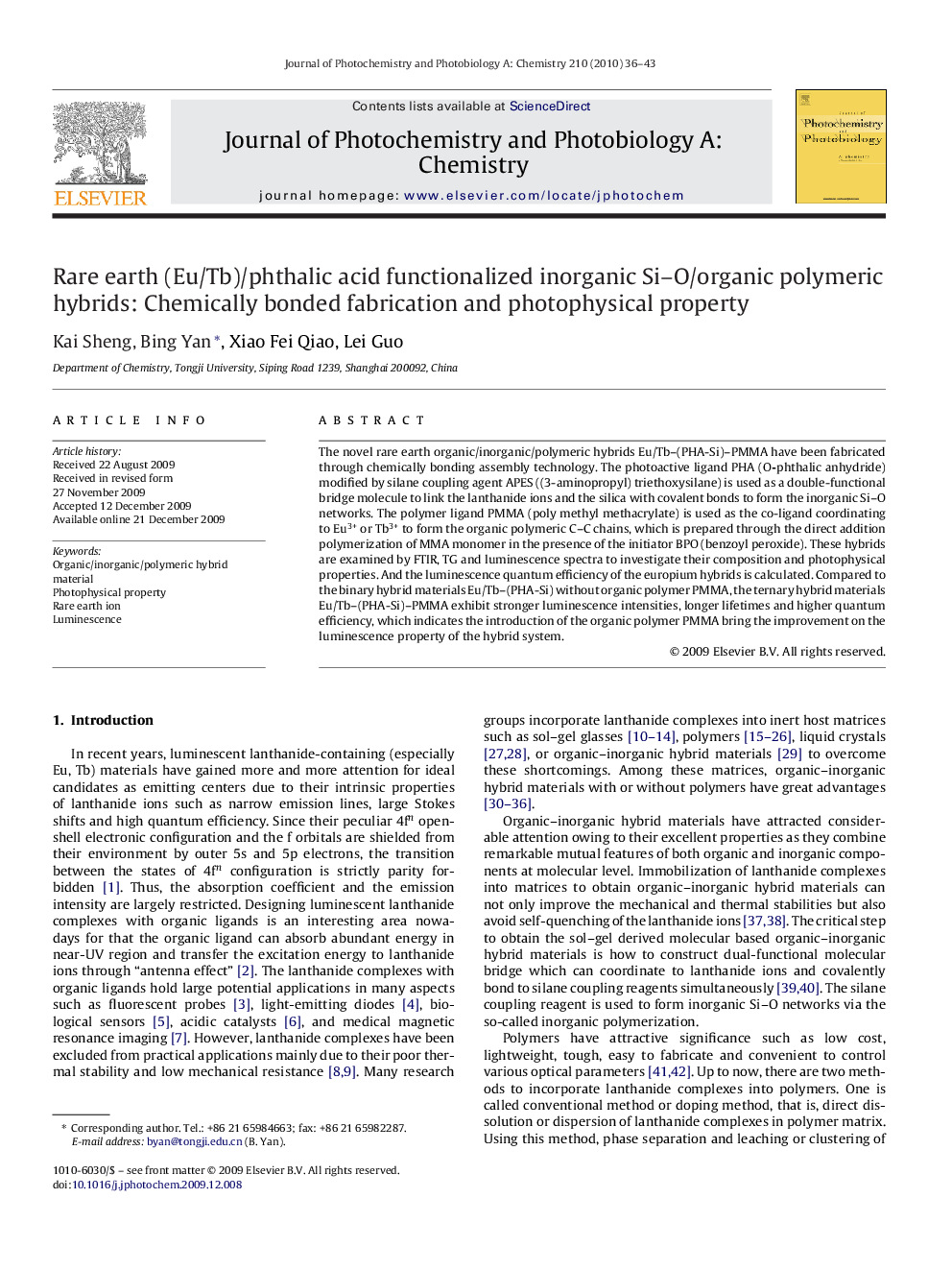| Article ID | Journal | Published Year | Pages | File Type |
|---|---|---|---|---|
| 27102 | Journal of Photochemistry and Photobiology A: Chemistry | 2010 | 8 Pages |
The novel rare earth organic/inorganic/polymeric hybrids Eu/Tb–(PHA-Si)–PMMA have been fabricated through chemically bonding assembly technology. The photoactive ligand PHA (O-phthalic anhydride) modified by silane coupling agent APES ((3-aminopropyl) triethoxysilane) is used as a double-functional bridge molecule to link the lanthanide ions and the silica with covalent bonds to form the inorganic Si–O networks. The polymer ligand PMMA (poly methyl methacrylate) is used as the co-ligand coordinating to Eu3+ or Tb3+ to form the organic polymeric C–C chains, which is prepared through the direct addition polymerization of MMA monomer in the presence of the initiator BPO (benzoyl peroxide). These hybrids are examined by FTIR, TG and luminescence spectra to investigate their composition and photophysical properties. And the luminescence quantum efficiency of the europium hybrids is calculated. Compared to the binary hybrid materials Eu/Tb–(PHA-Si) without organic polymer PMMA, the ternary hybrid materials Eu/Tb–(PHA-Si)–PMMA exhibit stronger luminescence intensities, longer lifetimes and higher quantum efficiency, which indicates the introduction of the organic polymer PMMA bring the improvement on the luminescence property of the hybrid system.
